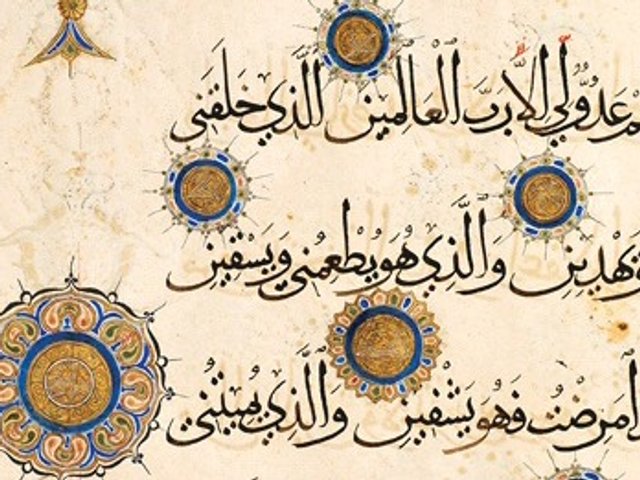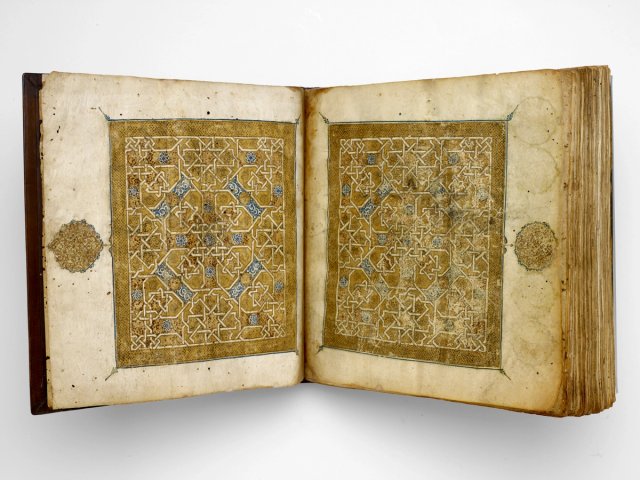It was a major boon for a collector to own a Qur’an by a celebrated calligrapher or copied at a holy site, such as the prayer room of the Prophet’s Mosque in Medina, or written in lampblack from the oil lamps at the Süleymaniye Mosque in Istanbul. By acquiring, reading and reciting from Qur’ans, the blessings they carry are bestowed on to their new owners. Fortunately for today’s scholars and conservators, early custodians were keen to add to the texts’ genealogy by inscribing their names and relevant restoration treatments in the manuscript.
The movement of Qur’ans is explored in an exhibition at the Sackler Gallery in Washington, DC, which features rare loans from Istanbul’s Museum of Turkish and Islamic Arts. For the US museum’s chief curator and curator of Islamic art, Massumeh Farhad, who is co-curating the show with Simon Rettig, it is thrilling to trace the manuscripts’ journeys through time and space.
From Baghdad to Istanbul An inscription in a late 13th-century Qur’an copied by the celebrated calligrapher Yaqut al-Musta’simi states that the Qur’an had travelled from Baghdad in Iraq to Tabriz, north-west Iran, before its arrival in Istanbul, possibly as one of the spoils from Selim I’s raid of the treasury of the Safavid dynasty founder, Shah Isma’il, after the Battle of Chaldiran in 1514. Three centuries passed before Sultan Mahmud II (reigned 1808-38) transferred it from Topkapi Palace to the tomb of his father Abdülhamid—an admirer of the calligraphic arts. It entered the collection of Istanbul’s new Museum of Turkish and Islamic Arts in 1914, when the Ottoman government centralised the empire’s manuscript collections.
These inscriptions also record previous restorations. “You see them particularly in the 18th and 19th centuries,” Rettig says. In most cases, the binding and the first and last pages are the first to be replaced. “The exhibition shows that components are not contemporary with each other. You have 13th-century texts with illuminations added in the 15th century in a binding made in the 17th century. It’s fascinating to have all these complex layers of history in one place,” he says.
Variety and artistic genius Examples of Qur’an boxes, from rare early survivals made of wood, cardboard and leather to 16th- and 17th-century building-shaped wood boxes inlaid with ivory, are also on display. The form and function of these later items may have been influenced by Byzantine reliquaries.
Farhad and Rettig hope these Qur’ans are seen as works of art. “There is incredible variety and artistic genius in making every copy unique. Qur’ans have been in the news a lot recently [in] a negative light,” she says. “As an art museum, we want to present them in a different light.”
• The Art of the Qur’an: Treasures from the Museum of Turkish and Islamic Arts, Freer and Sackler Galleries, Washington, DC, until 20 February 2017




